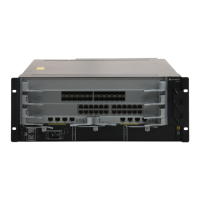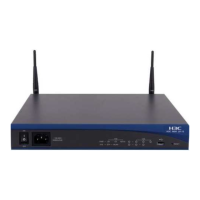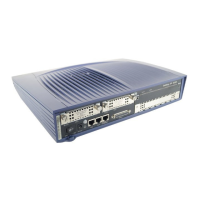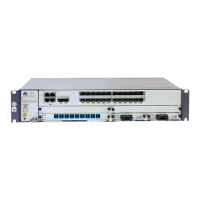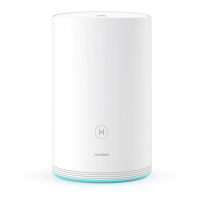Command Manual - STP
Quidway S6500 Series Ethernet Switches Chapter 1 MSTP Configuration Commands
Huawei Technologies Proprietary
1-4
2) CIST port parameter: Port state, role, priority, path cost, designated bridge,
designated port, edge port/non-edge port, whether connected to the point-to-point
link, port transit limit, whether to enable Root protection, number of the VLAN
maps, whether being a region edge port, Hello Time, Max Age, Forward Delay,
Message-age time, and Remaining-hops.
3) Global MSTIs parameter: MSTI instance ID, bridge priority of the instance,
whether an MSTI root is a primary or secondary one, region root, internal path cost,
MSTI root port, and MASTER bridge.
4) MSTIs port parameter: Port state, number of the VLAN maps, role, priority, path
cost, designated bridge, designated port and Remaining Hops.
Statistics information: Count of TCN, CONFIG BPDU, RST, and MST BPDU
transmitted/received via the port.
For the related command, see reset stp..
Example
# Display the state and statistics information about the spanning tree.
<Quidway> display stp instance 0 interface Ethernet 2/1/1 to Ethernet 2/1/4
GigabitEthernet 3/2/1 to GigabitEthernet 3/2/4 GigabitEthernet 3/3/1 brief
MSTID Port Role STP State Protection
0 Ethernet2/1/1 ALTE DISCARDING LOOP
0 Ethernet2/1/2 DESI FORWARDING NONE
0 Ethernet2/1/3 DESI FORWARDING NONE
0 Ethernet2/1/4 DESI FORWARDING NONE
0 GigabitEthernet3/2/1 DESI FORWARDING NONE
0 GigabitEthernet3/2/2 DESI FORWARDING NONE
0 GigabitEthernet3/2/3 DESI FORWARDING NONE
0 GigabitEthernet3/2/4 DESI FORWARDING NONE
0 GigabitEthernet3/3/1 ROOT FORWARDING NONE
Table 1-2 the display Information
Field Description
MSTID MST instance ID of the port
Port Port number
Role Interface role
STP State
STP State of the port, which can be learning,
forwarding, or discarding
Protection Protection Type of the port, which can be
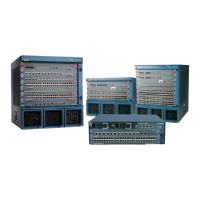
